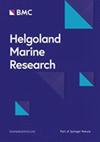Methods to study organogenesis in decapod crustacean larvae II: analysing cells and tissues
4区 地球科学
Q2 Agricultural and Biological Sciences
引用次数: 5
Abstract
Cells and tissues form the bewildering diversity of crustacean larval organ systems which are necessary for these organisms to autonomously survive in the plankton. For the developmental biologist, decapod crustaceans provide the fascinating opportunity to analyse how the adult organism unfolds from organ Anlagen compressed into a miniature larva in the sub-millimetre range. This publication is the second part of our survey of methods to study organogenesis in decapod crustacean larvae. In a companion paper, we have already described the techniques for culturing larvae in the laboratory and dissecting and chemically fixing their tissues for histological analyses. Here, we review various classical and more modern imaging techniques suitable for analyses of eidonomy, anatomy, and morphogenetic changes within decapod larval development, and protocols including many tips and tricks for successful research are provided. The methods cover reflected-light-based methods, autofluorescence-based imaging, scanning electron microscopy, usage of specific fluorescence markers, classical histology (paraffin, semithin and ultrathin sectioning combined with light and electron microscopy), X-ray microscopy (µCT), immunohistochemistry and usage of in vivo markers. For each method, we report our personal experience and give estimations of the method’s research possibilities, the effort needed, costs and provide an outlook for future directions of research.方法研究十足甲壳类幼体的器官发生:细胞和组织分析
细胞和组织形成了令人眼花缭乱的甲壳类幼虫器官系统的多样性,这是这些生物在浮游生物中自主生存所必需的。对于发育生物学家来说,十足甲壳类动物提供了一个令人着迷的机会来分析成年生物体是如何从器官Anlagen压缩成亚毫米范围内的微型幼虫的。这篇文章是我们研究十足甲壳类动物幼虫器官发生的方法的第二部分。在一篇配套的论文中,我们已经描述了在实验室培养幼虫以及解剖和化学固定其组织以进行组织学分析的技术。在这里,我们回顾了各种经典的和现代的成像技术,这些技术适用于分析十足动物幼虫发育过程中的特征、解剖和形态发生变化,并提供了许多成功研究的技巧和技巧。这些方法包括基于反射光的方法、基于自身荧光的成像、扫描电子显微镜、特定荧光标记物的使用、经典组织学(石蜡、半薄和超薄切片结合光学和电子显微镜)、x射线显微镜(微CT)、免疫组织化学和体内标记物的使用。对于每种方法,我们都报告了我们的个人经验,并对该方法的研究可能性、所需的努力、成本进行了估计,并对未来的研究方向进行了展望。
本文章由计算机程序翻译,如有差异,请以英文原文为准。
求助全文
约1分钟内获得全文
求助全文
来源期刊

Helgoland Marine Research
地学-海洋学
自引率
0.00%
发文量
0
审稿时长
6-12 weeks
期刊介绍:
Helgoland Marine Research is an open access, peer reviewed journal, publishing original research as well as reviews on all aspects of marine and brackish water ecosystems, with a focus on how organisms survive in, and interact with, their environment.
The aim of Helgoland Marine Research is to publish work with a regional focus, but with clear global implications, or vice versa; research with global emphasis and regional ramifications. We are particularly interested in contributions that further our general understanding of how marine ecosystems work, and that concentrate on species’ interactions.
 求助内容:
求助内容: 应助结果提醒方式:
应助结果提醒方式:


